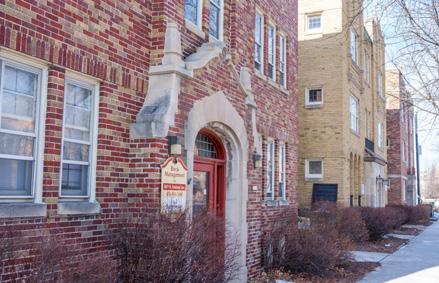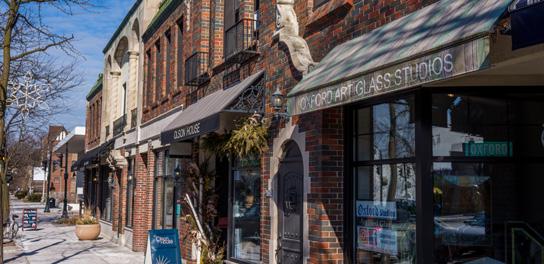
2 minute read
Preserving Village Character





VILLAGE FEATURE STORY
Zoning updates will help create cohesive commercial districts
BY JENNIFER ANDERSON | PHOTOS BY PATRICK MANNING
Shorewood is moving to redefine future development in its business and mixed-use districts with new zoning regulations that help preserve an area’s character.
In adopting a hybrid, form-based commercial zoning code, the Village aims to ensure that new developments or renovations are compatible with their surroundings and contribute to a vibrant and engaging streetscape.
The code update is part of the Village’s Comprehensive Plan 2040, which states that adopting form-based standards “would enable the Village to take a proactive approach toward potential redevelopments on Oakland and Capitol by establishing up front what the community wants.”
FORM OVER FUNCTION
Shorewood’s current, conventional, single-use zoning regulations were designed nearly a century ago to divide communities into districts based solely on land use. This was helpful in separating residential areas from commercial or industrial ones, but made it difficult to create walkable, mixed-use spaces. This type of zoning has been blamed for giving rise to strip malls, automobile dependency and urban sprawl, as well as contributing to racial segregation.
Conventional zoning also prioritizes a building’s function, often at the sacrifice of its form. By contrast, a form-based code focuses on a new development’s compatibility in a zone or neighborhood.
Planetizen.com, a news and educational website that studies how built environments engage with natural ones, summarizes form-based codes as addressing “the relationship between building facades and the public realm, the form and mass of buildings in relation to one another, and the scale and types of streets and blocks.”
To allow for a diverse mix of building uses, Shorewood’s plan calls for a hybrid approach, under which proposed businesses and uses would continue to be regulated.
The Village has hired the firm CodaMetrics to help direct the code overhaul. At the January 12 kickoff meeting, firm consultant Leslie Oberholtzer explained that her mission is to “help communities create places that people love, places that inspire care and stewardship, places that will last.” She outlined four main elements that define form-based code: B Aims to implement a community’s desired character and vision B Focuses on a high-quality, walkable public realm B Clear, easy-to-understand and objective regulations B A more predictable process and a finished product that yields no surprises
PUBLIC PARTICIPATION
Throughout the coming year, the process of developing and integrating this new code will involve listening sessions and public workshops, multiple drafts and refinements, and is expected to conclude with approval and adoption of new zoning regulations by the Village Board.
Revising commercial zoning code will place more emphasis on aspects of the Village most residents say they cherish, says Village Manager Rebecca Ewald: “Buildings with character that are designed to engage with the community, a predictable and consistent building-to-street ratio, and a harmonious, cohesive look that celebrates and reflects the Village’s unique history and sense of place.” n


